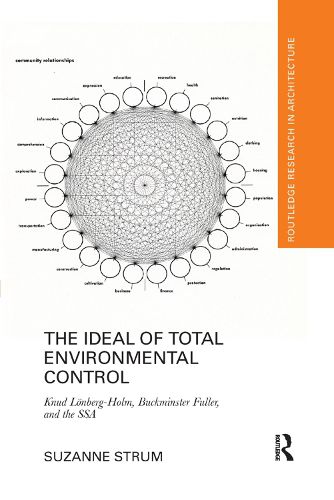Readings Newsletter
Become a Readings Member to make your shopping experience even easier.
Sign in or sign up for free!
You’re not far away from qualifying for FREE standard shipping within Australia
You’ve qualified for FREE standard shipping within Australia
The cart is loading…






This book traces the ideal of total environmental control through the intellectual and geographic journey of Knud Loenberg- Holm, a forgotten Danish architect who promoted a unique systemic, cybernetic, and ecological vision of architecture in the 1930s. A pioneering figure of the new objectivity and international constructivism in Germany in 1922 and a celebrated peer of radical figures in De Stijl, the Bauhaus, and Russian constructivism, when he emigrated to Detroit in 1923 he introduced the vanguard theory of productivism through his photography, essays, designs, and pedagogy. By following Loenberg- Holm’s ongoing matrix of relations until the postwar era with the European vanguards in CIAM and former members of the Structural Study Associates (SSA), especially Fuller, Frederick Kiesler, and C. Theodore Larson, this study shows how their definition of building as a form of environmental control anticipated the contemporary disciplines of industrial ecology, industrial metabolism, and energy accounting.
$9.00 standard shipping within Australia
FREE standard shipping within Australia for orders over $100.00
Express & International shipping calculated at checkout
This book traces the ideal of total environmental control through the intellectual and geographic journey of Knud Loenberg- Holm, a forgotten Danish architect who promoted a unique systemic, cybernetic, and ecological vision of architecture in the 1930s. A pioneering figure of the new objectivity and international constructivism in Germany in 1922 and a celebrated peer of radical figures in De Stijl, the Bauhaus, and Russian constructivism, when he emigrated to Detroit in 1923 he introduced the vanguard theory of productivism through his photography, essays, designs, and pedagogy. By following Loenberg- Holm’s ongoing matrix of relations until the postwar era with the European vanguards in CIAM and former members of the Structural Study Associates (SSA), especially Fuller, Frederick Kiesler, and C. Theodore Larson, this study shows how their definition of building as a form of environmental control anticipated the contemporary disciplines of industrial ecology, industrial metabolism, and energy accounting.